- Home
- Register Here
- Products
- Download Center
- Collaborative Learning
- Biology Activities
- Music Activities
- Chemistry Activities
- Geography Activities
- History Activities
- Ancient & Modern Olympics
- Ancient Greek and Modern Education
- Antisemitism and Anne Frank
- Arachne
- Aztec Tributes Game
- Catch the Plague
- Egypt Quiz
- Greek Farming
- Greek Gods Identity Parade
- Henry VIII's Six Wives
- Medieval Snakes and Ladders
- Perseus and the Gorgon
- Slave Rebellions
- Technology and the Wilsons
- Tudor Entertainments
- Underlying Causes of First World War
- Victorian Working Life
- WW2 Air Raids
- Literacy Activities
- Buri and the Marrow
- Classic Tales
- Collection
- Complex Sentences
- Compound Nouns
- Consonant Clusters
- Don’t Cry Sly Fox
- Double or Single Consonants
- Feelings Synonyms
- Frequent Words
- Giant Turnip Rhyming Words
- Greek Word Detective
- Haiku
- Holes - Louis Sachar
- Improving Adjectives
- It could have happened, but in fact it didn't
- Macbeth - Close Look at Act One
- Macbeth - Macbeth's Feelings
- Macbeth - Two Minute Autobiography
- Macbeth Connect Four
- Not Again Red Riding Hood (Lotto Game)
- Not Again Red Riding Hood (Track Game)
- Oliver Twist
- Plural Monsters Machine and "One or More than One" Spelling Game
- Prefix Connect Four
- Prefix Pairs
- Punctuation Game
- Silent Letters
- Simile Bingo
- Sufficient Suffixes
- Suffix Trees
- The Elves and the Shoemaker
- The Giant Turnip (Bingo Game)
- Too Many Apostrophes
- Vowels (Connect Four)
- Maths Activities
- 12 and 24 Hour Clock
- Adding Two Digit Numbers
- Battle for Angle Forest
- Bigger or Smaller than Half
- Book Mystery
- Buy a Bear
- Change
- Decimal Street
- Doubling Cards
- Football Scores
- Four In a Row
- Fraction Frolics
- How Much How Many
- Maths Vocabulary
- Measuring
- More or Less (10-100)
- More than, Less than
- Number Balance
- Number Bonds
- Perfect Paint Palette
- Probability
- Regular Polygons
- Shape Monsters
- Transformations
- PSHE Activites
- Physics Activities
- Download Activities
- Interactive Demo
- Videos & Instructions
Collaborative Learning : Biology Activities
| Title | Image |
|---|---|
Where Can You Find Me ? (Connect Four Game)Description: We have concentrated here on animals that can be found or sighted in English playgrounds during the day. If you have a very different playground population, you will need to add and subtract cards. If you produce very different sets of animals please send them to address below for expanding our library. Learning Outcomes: Pupils will be able to define and describe animals in detail, recognise common animals and insects and study their behaviour and habitats. |
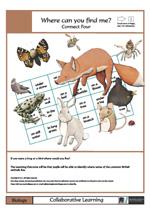 |
Who Eats What ? (Matching Game)Description: We have concentrated here on animals that can be found or sighted in English woodlands. If you have very different animals in the woods or forests in your area then you can add and replace cards. Learning Outcomes: Pupils will be able to understand and describe the variety of foods that woodland animals eat. They can narrate their findings, describing the animals, insects and birds and their diet and habitats. |
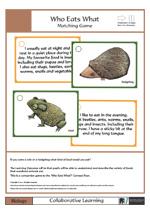 |
Who Eats What ? (Connect 4 Game)Description: We have concentrated here on animals that can be found or sighted in English woodlands. If you have very different animals in the woods or forests in your area then you can add and subtract cards. If you add different sets of animals please send them to the address below for expanding our library. Learning Outcomes: Pupils will be able to understand and describe the variety of foods that woodland animals eat. They can narrate their findings, describing the animals, insects and birds and their diet and habitats. |
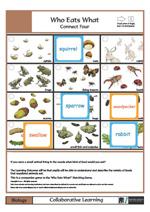 |
Germ WarfareDescription: This game was developed for pupils to explore and learn about the basics of hygiene; how germs are transmitted, and that they can make us ill. The importance of how germs are spread has been highlighted by various campaigns to reduce the infection rate of many illnesses world wide. You might want to make your own variation of the game cards to reflect other hygiene issues in your environment.
|
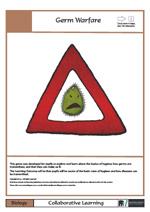 |
WaterholeDescription: The survival game is a fun way for pupils to gain knowledge of the various dangers that a wild animal faces. The game has four animals for the pupils to choose from but they can also make their own. Learning Outcomes: Pupils will have gained knowledge of the dangers wild animals face to survive. |
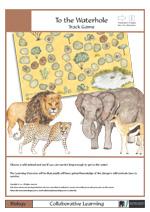 |
Vertebrate (Information Gap)Description: This activity will encourage students to look at and describe the different features of various vertebrates. It will reinforce their use of descriptive language and their understanding of animals. This is a companion game to “Vertebrate Connect Four”. Learning Outcomes: Students will be able to describe different features of various vertebrates. |
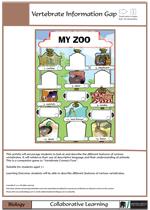 |
Vertebrate (Connect Four)Description: In Biology, students learn about the features of amphibians, fish and mammals. Matching these animals to their various characteristics while playing a game helps to reinforce students’ learning in a fun way. This is a companion game to “Vertebrate Information Gap”. Learning Outcomes: Students will be able to name the characteristics of various animals. |
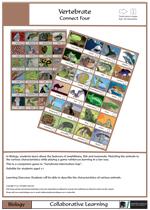 |
Plant or AnimalDescription: Classification is very important in all the sciences. In this activity, students explore the characteristics of plants and animals, and then match them to a Plant or Animal place on the game board. You can add pictures or characteristics to the blank Game Cards. You may wish to add versions of the Game Cards in different languages, to support children new to English. Learning Outcomes: Students will be able to differentiate between the characteristics of animals and plants. |
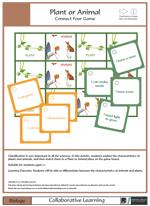 |
Parts of a FlowerDescription: While studying nature, it is important to identify and label the various parts of plants. This game is a fun way to help students to identify the parts of a flower.
Learning Outcomes: Students will be able to identify the various parts of a flower, their location, properties and function. |
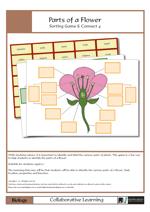 |

